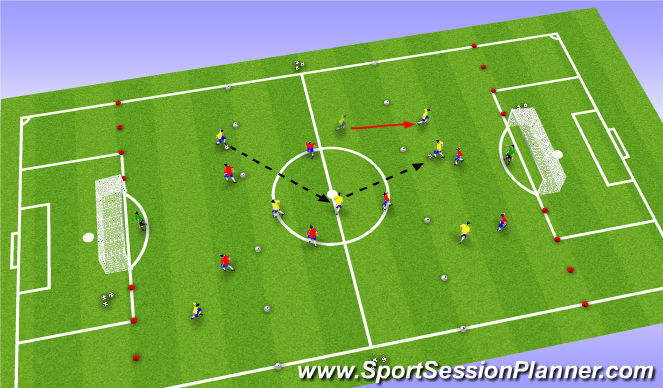
In the end, however, all players should know all terms as part of their soccer education. Coaches may determine which ones they want to use, specific to their team. A number of the calls have the same meaning. As with all aspects of instruction, coaches should teach all of the calls to everyone, presenting blocks of them as early to an age group as possible, based on what the players can understand. The general categories used below are applicable to all field players and then there are those that are specific to the “Defensive Organizer” (usually a center back, trail center-back, or sweeper) and goalkeepers. More advanced terms may include “Overlap,” and “Dummy,” both associated with advanced offensive tactics. Mid-level terms may include “Mark up,” “Goal-side,” “Control,” “Jockey,” and “Challenge,” all associated with one-on-one (1 v 1) defense. For example, introductory terms may include “Settle,” “Time,” “Turn,” “Carry,” and “Man-on,” all associated with receiving, controlling, and dribbling the ball.

Coaches must present the communications at age-appropriate intervals, in parallel with the skills and tactics involved, so that players will comprehend the corresponding meanings. The following list represents oral communication that covers a wide range of abilities and understanding, from introductory to advanced. As a result, they are the players who are in the best position to direct the flow of play using oral communication. This is especially true for the players who are behind the ball (closer to their own defensive goal than the ball), because they have the best view of all.

This is because it is the players without the ball who have the better view of all of the action taking place on the field. Most often, however, it is a player without the ball who will be speaking. Sometimes it is the player with the ball who will speak. The words and phrases below or “calls,” and their associated definitions, are all used within specific game contexts.

The short words or phrases that are used must be immediately recognizable and their meanings completely understood, along with the actions to be taken, by every player on the team. Short words or phrases are used because the fast pace of the game demands that information be imparted quickly and accurately. This is true in all phases of the game and can take many forms. Oral communication among players during a game is critical to successful soccer.


 0 kommentar(er)
0 kommentar(er)
